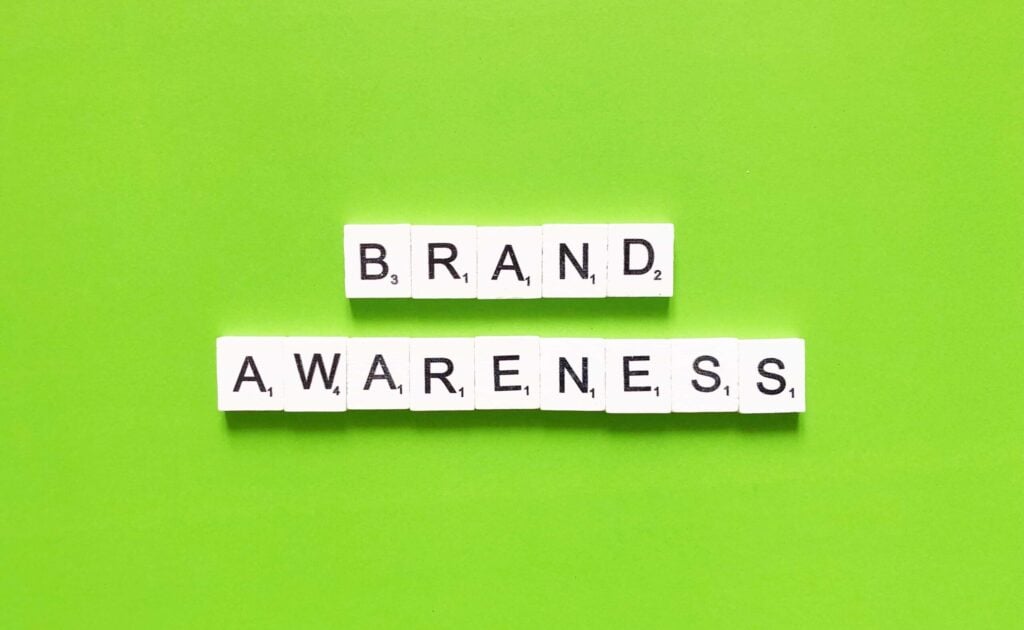How to raise brand awareness | 7-step guide to building a brand from scratch

Are you trying to educate your target customers about your brand? Struggling to get people to take notice, or not sure where to start? Here’s our 7-step guide to building a brand from scratch.
Once you’ve done your market research and you know what you want your business to be, and where you want it positioned in the market, it’s time to start raising awareness and getting your brand name in front of eyes, inside brains, and rolling off tongues: both as recommendations based on your quality, and as requests for more of your offering.
The 7 steps listed here can be taken at any point by your business, whether you’re a startup looking to create hype, or you’ve repositioned and you’re ready for people to rediscover your business.
1. Create engaging, educational content, and distribute it where your target demographic is most active
If you think about your favourite brands, what do they all have in common? You probably view them as experts in their field, and in a secondary capacity to their commercial objectives, as a resource. This is especially true in the case of brands that offer services or more technical products.
With this in mind, a massive kickstart to raising brand awareness is to build up a back catalogue of informative client-facing content that adds value to your unique selling proposition (USP) while also subtly directing customers to your solutions and offerings. Create blog posts, podcasts, videos, and infographics that resonate with your target audience’s interests and pain points.
Choose the most appropriate social media sites, online forums, and websites dedicated to your industry where your potential customers spend time, and use these platforms to share and promote your content.
2. Offer an original point of view and don’t be afraid to be different
Assuming you’ve done your market research and you’re familiar with your competitors and potential competitors, you should be able to isolate what’s different about your offering to everyone else’s. It could even be the reason you went into business in the first place – because you saw an industry-wide trend that didn’t serve end users.
Whether you’re the first company in your area to bring a direct-to-consumer model to market, or you’ve taken a retail model and turned it into a subscription model, or even something more revolutionary, promote and celebrate what it is you do differently.
Presenting a unique perspective or approach allows your brand to be authentic, to showcase your values and mission, and gives you a chance to connect emotionally with your audience and position yourself distinctly from your competitors.
If you’re just doing what everyone else does but you’re “the new guy,” you’re essentially trying to trade on a reputation you don’t have. If you’re not showing how you’re innovative or revolutionary to your target customers when you enter a market, new just means unproven.
3. Use marketing games to engage users, convey key messages, and distribute introductory codes to push early conversions
Marketing games are a great way to crack through browser apathy and make them pay attention to your messaging and pay attention to your brand. Unlike more traditional forms of media that are consumed passively, gamified content is interactive and immersive, and invites users to have an experience as opposed to paying attention to something that will just wash over them.
Combined with appealing to their wills to win, and appetites for diversion, marketing games are a great way to encourage users to pay attention to branded content for longer, and to distribute promotional codes to incentivise conversions – so key in the early stages of building a brand.
Pro tip: The superpowers of gamification are accessible to all businesses looking to build their brand, not just big and established ones. Using Drimify’s gamification platform, you can customise a range of pre-made marketing games, using your own images, your own logo, and your own copy to deliver the desired branded experience to your audience.
4. Invest in social media advertising
Utilising paid social media ads on platforms like Facebook, Instagram, or Twitter is a highly effective way to reach a wider audience and increase your brand visibility.
You should invest your resources in using the social media platforms most appropriate to your target segments, and target your ads based on demographic data, interests, and behaviours, to ensure they reach the most relevant potential customers.
5. If it’s on brand, look to incorporate guerilla marketing or experiential marketing tactics
Executing unconventional and memorable marketing campaigns that surprise and engage your audience is a great way to build your brand quickly.
Hosting experiential events or stunts that are creative and tie in to your USP can capture people’s imaginations and leave a lasting impression – forever cementing people’s experience of your brand as a positive feeling you were able to deliver.
Pro tip: If you’re hosting a launch event for your brand, or an event to launch a product which you intend to become a flagship model to represent your brand, gamification is a great way to structure the narrative and entertain your guests.
Using the Dynamic Path™ format you can customise a multi-level experience for attendees that uses the physical event space to essentially create an engaging digital treasure hunt. To unlock the different levels, they need to solve clues to find hidden codes. The whole process could get players to compete against each other to try and win the product in question, learning about the brand as they move through the experience.
You could even make things “phygital” and launch a digital version of this that transposes the experience to gamify your website’s strategic pages, delivering your experience and your branded messaging to a much greater proportion of people.
6. Form strategic partnerships with other brands
Collaborating with complementary businesses or influential partner brands not only expands your reach and gains you exposure to other audiences, it also gives you branding by association.
You know the expressions: “Tarred with the same brush,” and “Guilty by association,” but they can also work positively. If you partner with another brand with a strong brand image, you can become synonymous with that brand, and gain a bit of their brand’s power by osmosis.
Jointly creating co-branded content, promotions, events, or even collab products can raise awareness for your brand, and for your partner brand.
For example, if you were running an up and coming artisanal gin company with a reputation for ethical sourcing, and you partnered with an up and coming artisanal tonic company with a similar penchant for sustainability, and put on a few events and a joint social media campaign, you get exposed to their audience (who may have been using the tonic brand they like with other gins), and your audience gets exposed to the new tonic brand. The association is an extension of the initial customer relationship, and you both benefit from the brand-building work the other has put in.
7. Work with influencers who operate in your niche and align with your brand
If you’ve not discovered a product because of a paid promotion on Instagram or TikTok, then the odds are that either your partner or a family member has, and somehow through that process, it’s ended up becoming a part of your life. This is a fact of the modern trading environment with even household items as innocuous-seeming as sponges seeing boosts in sales through influencer collaborations.
Identifying and partnering with influencers whose values, content, and audience match with those of your brand allows you to piggyback on their personal brand. To put it in simple terms, it would be unthinkable that someone who is perceived by their audience as being wholesome and positive would partner with a brand that is anything but pure in its intentions. Similarly, an influencer perceived as cool and cutting edge surely wouldn’t endorse a brand for squares?
Because influencers trade on their authenticity, their endorsement can really speak volumes in how people perceive your brand, on top of making your brand far more visible to new audiences.
Key takeaway

Raising brand awareness is in some ways far easier than it used to be. You have access to social media platforms to promote your business, easy creation of gamification experiences through platforms like Drimify, and the speed of delivery can be far more widespread than old-school methods.
Equally, with the rise of faster delivery methods and easier access to audiovisual and interactive technology, it means it can be confusing to know exactly where to spend your efforts when trying to raise brand awareness – particularly when you’re a startup or a new business still trying to find where you fit.
So long as you’ve put in your market research, and have an idea of where you’re positioning your brand and your offering relative to your competition, this 7-step guide to building a brand will be actionable across all sectors.

































































































